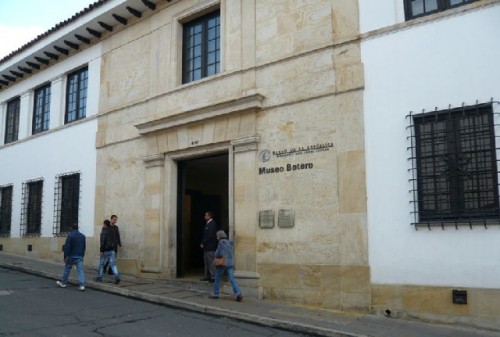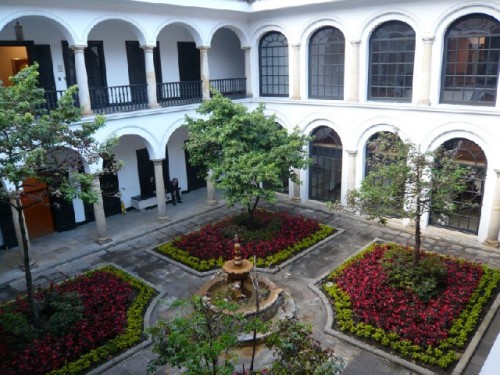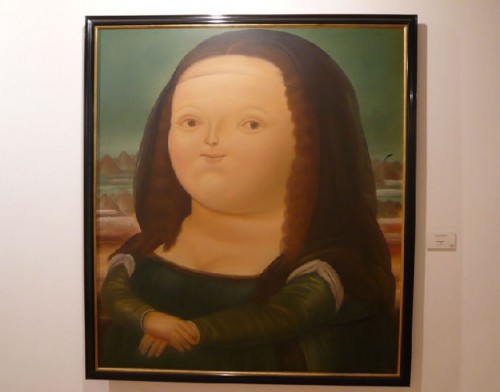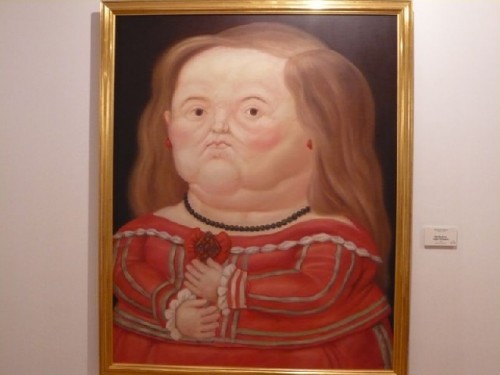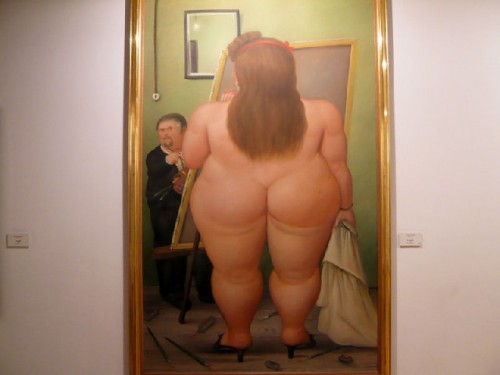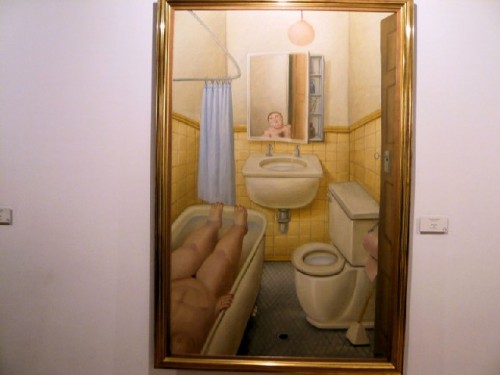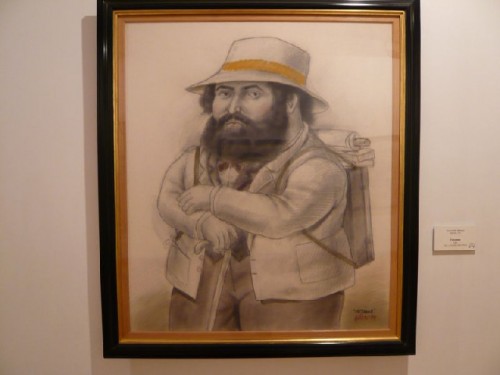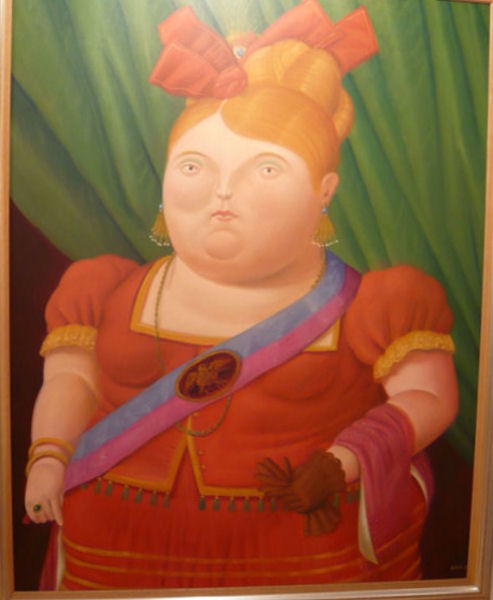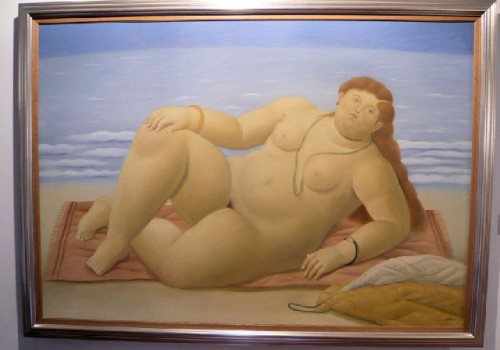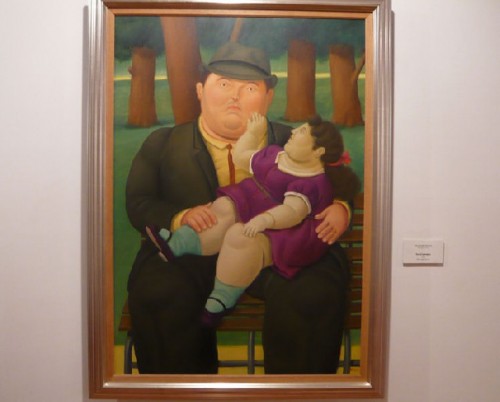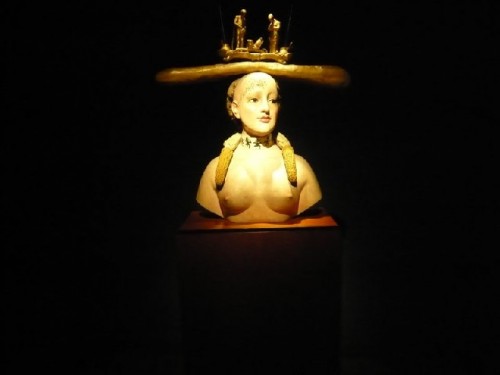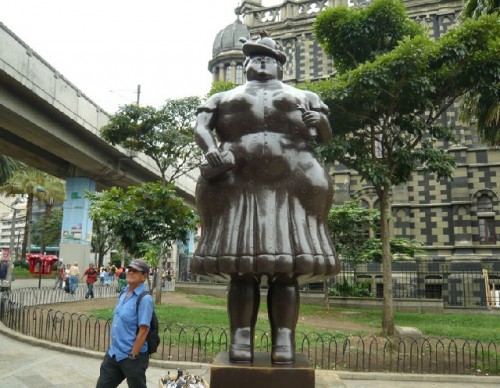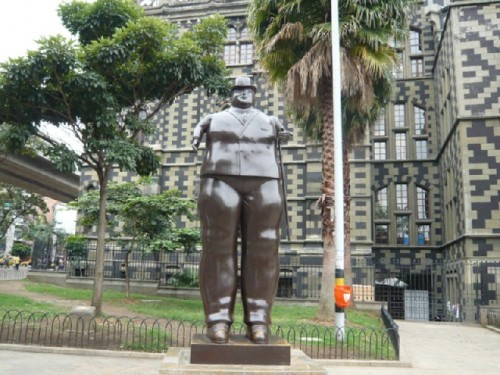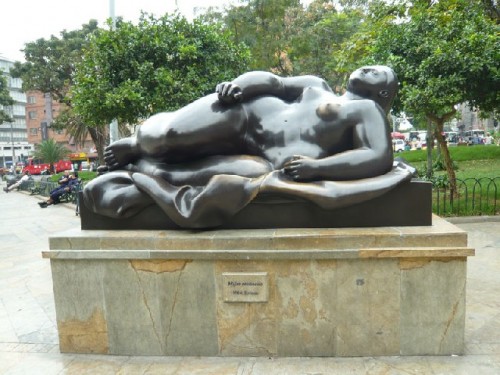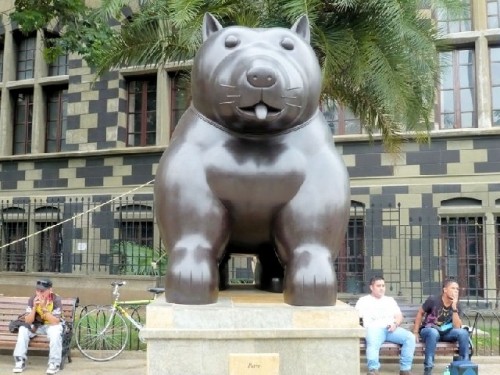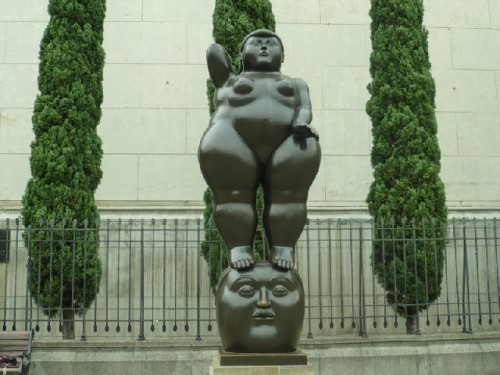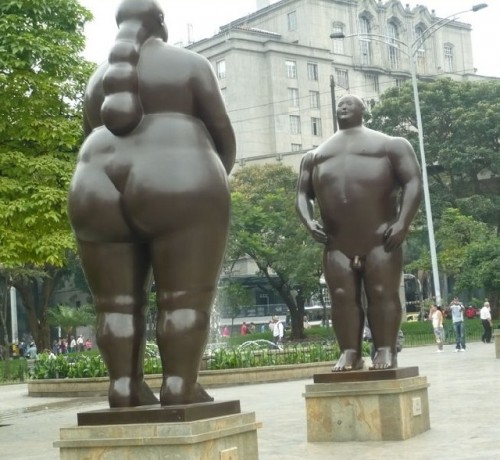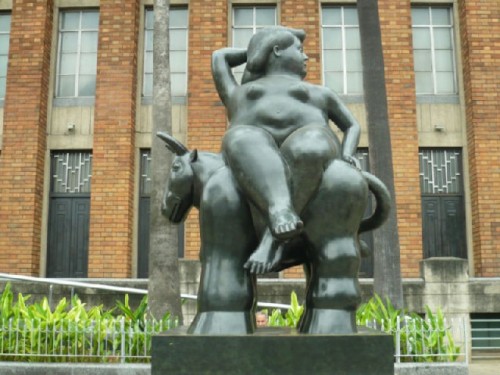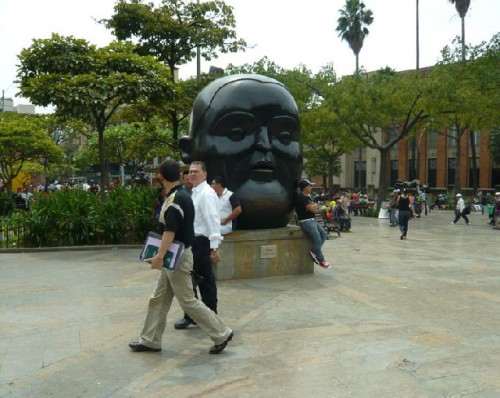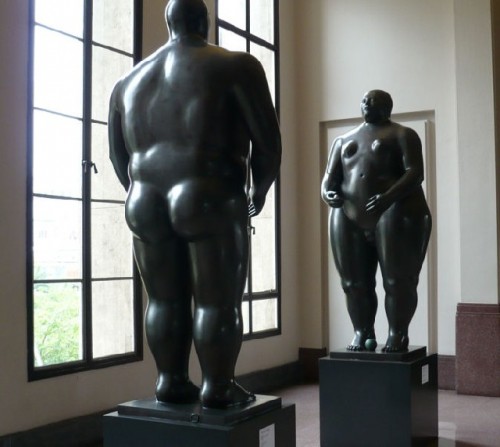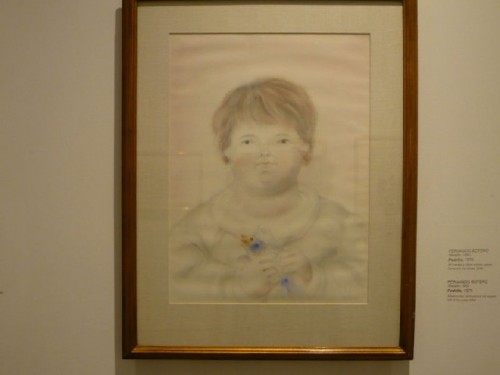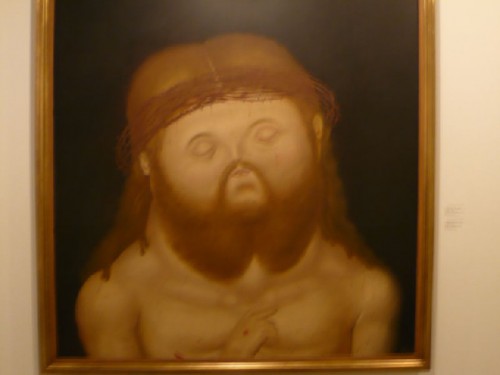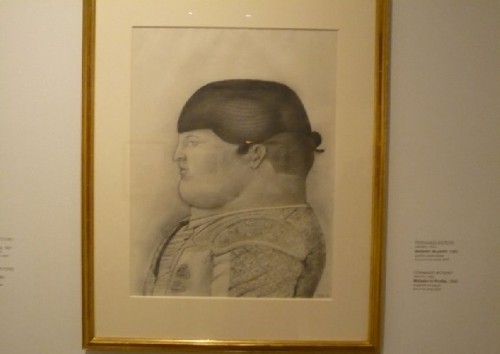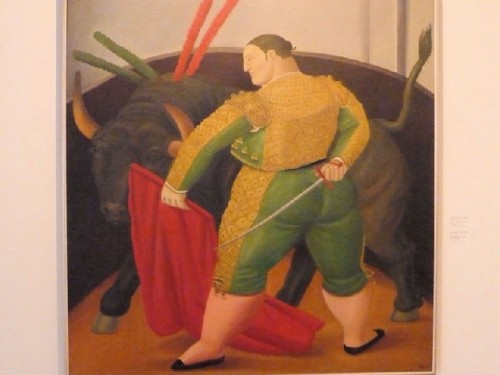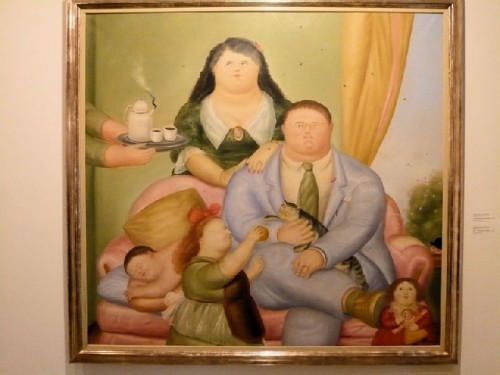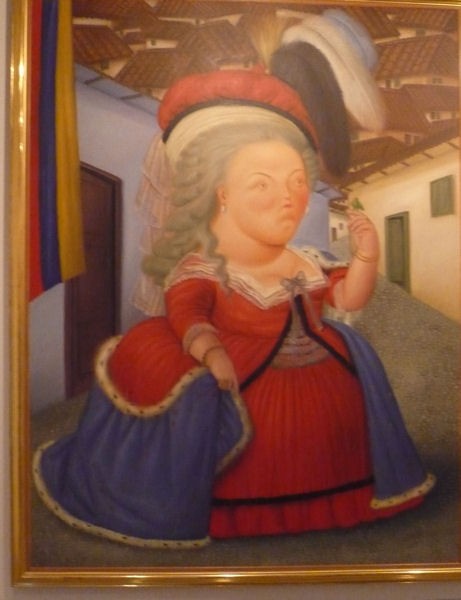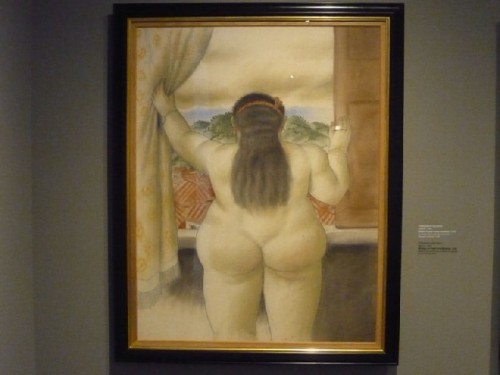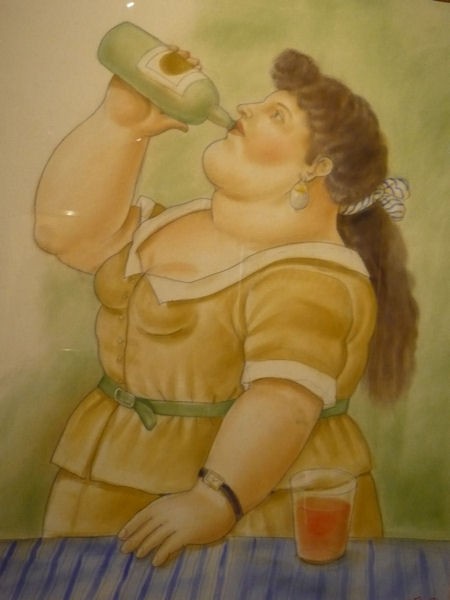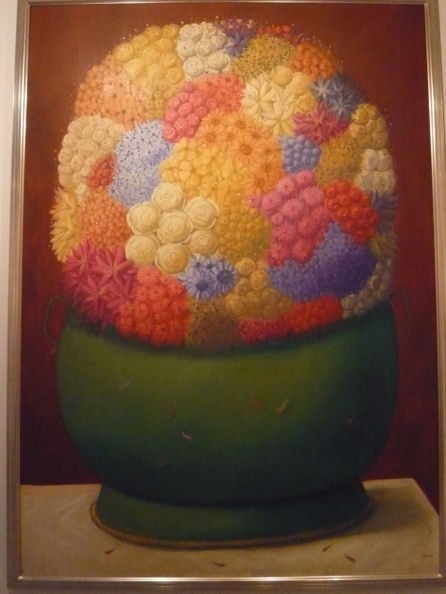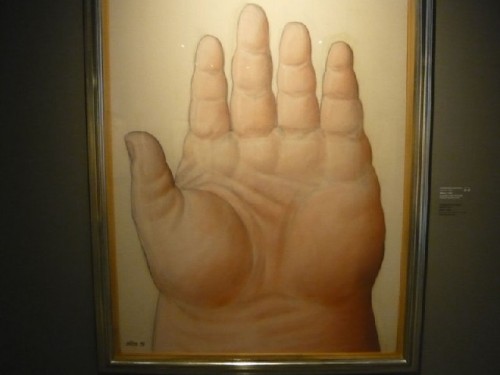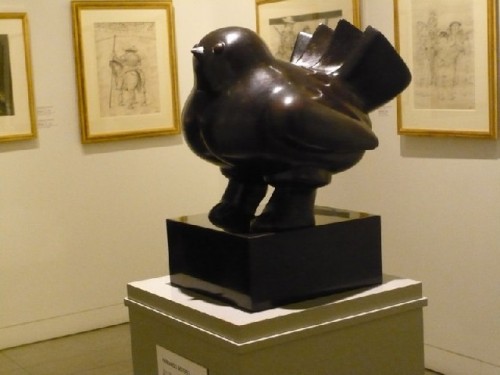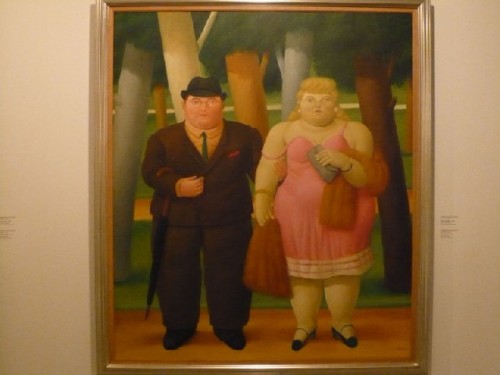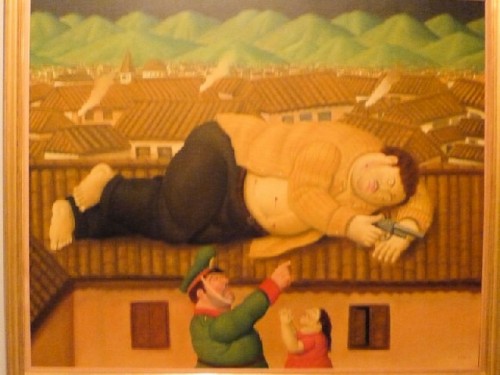Fernando Botero Seen in Bogota
Colombia's Living Treasure
By: Zeren Earls - Mar 17, 2014
“Art is not just adornment. Towards intolerance we should fight with art; because art is not a capriccio that adorns or decorates society, but it is a spiritual necessity that should be shared with enthusiasm. For me it is an infinite pleasure to know that these works of art belong to Colombia today,” reads a wall text at the entrance to the Botero Museum in Bogota, the capital city.
Being immersed in the works of Botero was worth the trip to Colombia. The works, donated by the artist — drawings, water colors, oil paintings, pastels, and sculptures of various sizes — are shared between two public museums, the Museo Botero in Bogota and the Museo de Antioquia in Medellin, Botero’s native city. The latter also has 23 monumental bronze sculptures in the famous outdoor Plaza Botero in front of the museum.
The Botero Museum in Bogota is in a renovated two-story colonial home in the city’s historic core, Candelaria. Formerly used as a library, the building opened as a museum in 2000 after Colombia’s central bank (Banco de la República) received a donation of 208 works from Botero: 123 of the artist’s own works and 85 pieces from his collection of international artists, with the stipulation that there would be no admission charge.
In the entrance to the museum stands a larger-than-life bronze sculpture of a hand by Botero. His other works are displayed chronologically on the two stories, which wrap around an attractive inner courtyard. Canvases of voluptuous, sensuous females; voluminous personages of the Colombian bourgeoisie and establishment — presidents, military officials, bishops, priests, politicians — depicted with humor and irony arrest, captivate and delight the viewer. Even the depiction of animals, houses, flowers, and fruit defies normal proportions by expanding and stretching the forms, resulting in an exaltation of volume which characterizes Botero’s unique style.
The wealth of Botero’s characters includes Europeans. One example is an homage to Leonardo da Vinci with a beautiful Mona Lisa painting. While the subject is Leonardo’s, the style is clearly Botero’s. Mona Lisa’s tiny smile contrasts sharply with the exalted volume of the face and her body expands to the proportion of a chain of mountains in the background. Thus the work is no longer a mere homage to a famous portrait, becoming instead a painting of grandeur and monumentality. Cezanne, Courbet, Louis XVI, and Marie Antoinette are other Europeans depicted in Botero’s portraiture.
Botero’s collection of international artists covers the mid-19th to late 20th century, including works by Matisse, Renoir, and Picasso. In the hallway following the room of impressionists, a compelling sculpture by Salvador Dali, “Retrospective Bust of a Woman” (1933), serves as a bridge to the 20th-century art in the next room.
Botero Plaza is a vibrant public space in the center of Medellin. 23 monumental sculptures rest on pedestals against a backdrop of surrounding trees, fountains, and buildings. Their roundness, bigness, and approachable subject matter — animals, reclining or sitting nudes, and the like —are delightful and invite interaction. Children climbing, tourists posing, vendors spreading their goods nearby, and others mingling or resting on benches all contribute to the popularity of this local hero. Due to their heavy use, the Antioquia Museum oversees the restoration of the sculptures every six months according to Botero’s strict guidelines.
Botero’s own works, as well as his collection of international art, constitute a major part of the three-story Antioquia Museum, which also houses pre-Columbian, Colonial, Western, and regional contemporary art. In 2000, after receiving more works donated by Botero, the museum relocated to its current refurbished location, the former City Hall of Medellin.
At the end of the stairway to each level, wrapped around a courtyard with palm trees, is an astonishing monumental Botero sculpture. Towering figures of Adam and Eve are examples. Fourteen works — mostly oils, two pastels, and two drawings — first donated by Botero on the occasion of the museum’s anniversary in 1976 are displayed in the Pedrito Room, named in honor of the artist’s youngest son, whose portrait is included. The north wing of the third floor is dedicated to works donated later, including sixteen medium-size sculptures. The works are a testimony to the artist’s mastery of a variety of media covering a broad range of subjects — still lifes, portraits, bull fights, even violence. “Pablo Escobar Dead” (2006), an oil painting donated to the museum in 2008, is a reminder of Medellin’s violent past, heralding the city’s transformation to a new reality. Botero’s international art collection, also donated, includes works by Frank Stella, Helen Frankenthaler, and Julian Schnabel.
A "self-educated" artist, Botero is famous worldwide, with works commanding high prices at auction houses. Botero began his training by copying Italian and Spanish old masters and was influenced by the Florentine art of the Renaissance. Later influences came from pre-Columbian art, as well as the Mexican murals of Orozco, Siqueiros, and Rivera. In 1957 he spent time around abstract impressionists in New York, finally forming his unique artistic expression of voluptuous exuberance and sensuality.
Botero owes his successful, prolific output to time dedicated in his studio every day of the week, with the exception of time spent traveling between countries to oversee his exhibitions. Now 82, he has given away all of his works for the enjoyment of others. His latest donation to the Museum of Antioquia, which owns a large sample of works spanning the artist’s career, includes a series of 27 oil paintings and 34 drawings. The series, “Via Crusis, la Pasión de Cristo” (Via Crusis: The Passion of Christ), initially displayed in the temporary galleries, is now part of the permanent collection, expanding the museum’s international exhibition.
Admission is free to both museums, which are open every day, including holidays.“

